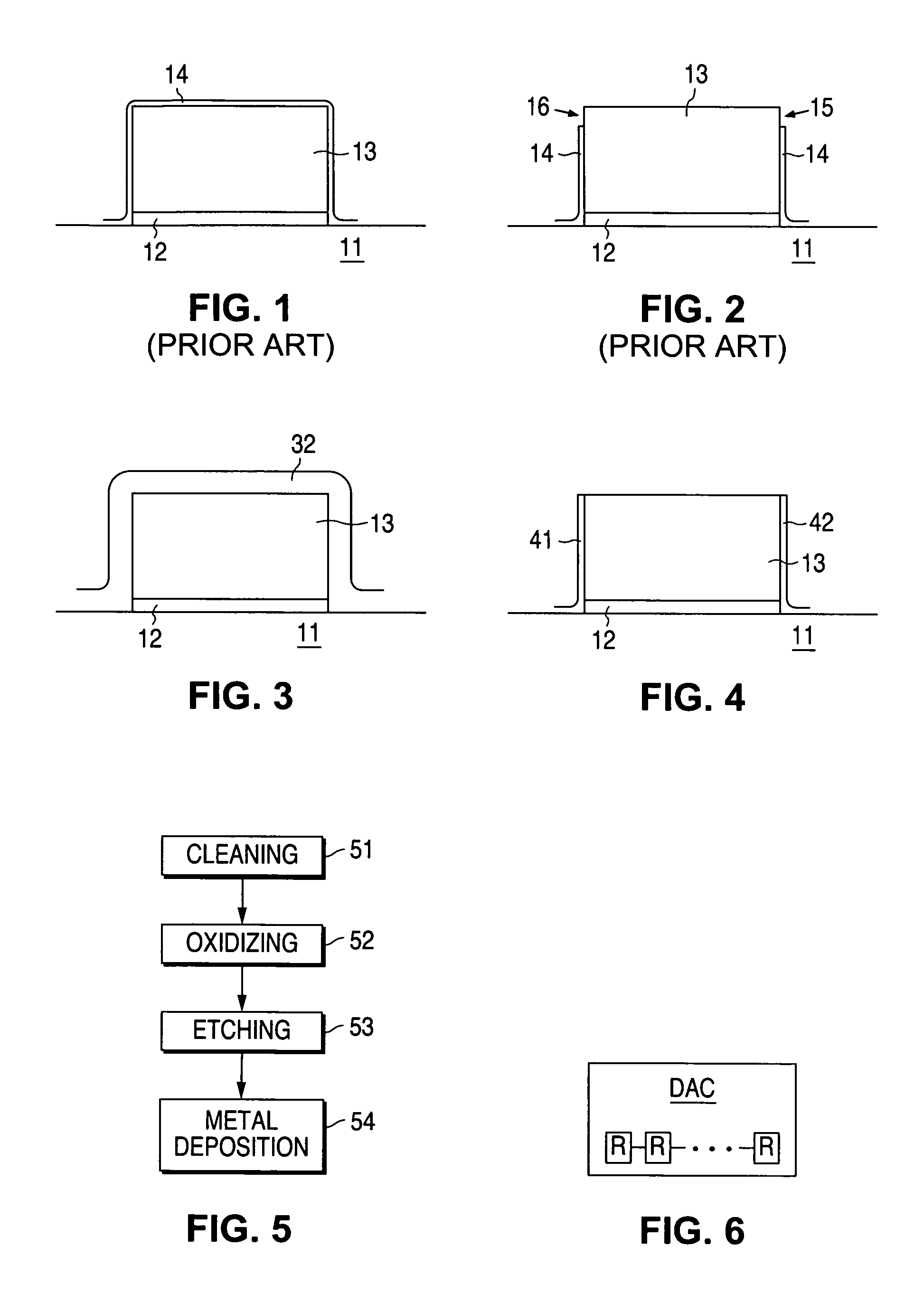Method of avoiding unwanted metal deposition on a semiconductor resistor structure
- Summary
- Abstract
- Description
- Claims
- Application Information
AI Technical Summary
Benefits of technology
Problems solved by technology
Method used
Image
Examples
Embodiment Construction
[0013]FIGS. 1 through 6, discussed below, and the various embodiments used to describe the principles of the present invention in this patent document are by way of illustration only and should not be construed in any way to limit the scope of the invention. Those skilled in the art will understand that the principles of the present invention may be implemented in any suitably arranged semiconductor manufacturing system.
[0014]FIG. 1 illustrates a semiconductor resistor structure just before pre-metal cleaning according to the prior art. The structure includes a semiconductor resistor 13, such as a doped polysilicon resistor. The resistor 13 is supported on a semiconductor substrate 11, with a suitable oxide layer 12 interposed between the resistor 13 and the substrate 11. A native is oxide layer 14 is formed on the semiconductor resistor 13. The native oxide layer 14 typically has a thickness in a range from about 10 angstroms to about 30 angstroms.
[0015]FIG. 2 illustrates the struc...
PUM
 Login to View More
Login to View More Abstract
Description
Claims
Application Information
 Login to View More
Login to View More - R&D
- Intellectual Property
- Life Sciences
- Materials
- Tech Scout
- Unparalleled Data Quality
- Higher Quality Content
- 60% Fewer Hallucinations
Browse by: Latest US Patents, China's latest patents, Technical Efficacy Thesaurus, Application Domain, Technology Topic, Popular Technical Reports.
© 2025 PatSnap. All rights reserved.Legal|Privacy policy|Modern Slavery Act Transparency Statement|Sitemap|About US| Contact US: help@patsnap.com


